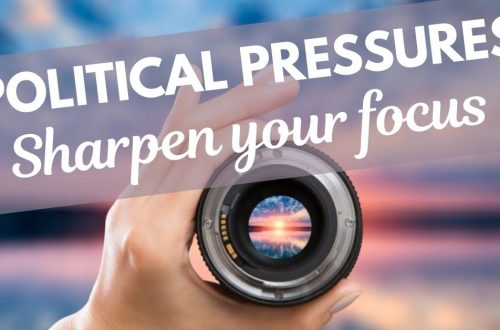Food: Waste Not, Want Not
Seven years ago, my family and I went to Africa for the first time, spending most of our hours with the Maasai in Kenya. At the end of a lovely day together, they killed a goat in our honor. One minute a cute little guy was roped to a post, and the next thing we knew, they had slit its neck.
For the first time in her life our daughter, then twelve years old, realized that “pork” is meat from a pig, “beef” is meat from a cow, and calling something “chicken” means it is just that—literally, the corpse of a chicken. For the next nine months, she was a vegetarian. (I think we can credit bacon with her conversation back to being a carnivore.)
Something that amazed me that night was that not one part of that animal went to waste. The greatest delicacy, in the eyes of the Maasai warriors, was the kidneys. The young men got those. The animal's fur, its teeth, its bones—everything had a purpose. Even the eyeballs went to feed the dogs that waited patiently for their treasure. No. Waste.
I think of that evening sometimes when I discover my lettuce has spoiled before I’ve finished using it. Or a tomato in my fridge grows mold, having been sliced but re-stored as a post-grill leftover. We used to have a joke in our house that a refrigerator is “the transition storage space from which food goes from fresh to spoiled before it can be discarded.” Some joke. It’s not so funny any more.
I should know better than to waste. Back when my father was in robust health, he would go into the fields in Oregon’s fertile Willamette Valley where picking machines had left behind some squat, sweet, yellow onions—those mild-flavored beauties with parchment-like skins. The picking machine worked in circles, so it missed the corners of the field. And having grown up during the Great Depression, Dad considered it a sin to let perfectly good produce rot. He was an engineer with a decent retirement, but even into his early nineties, he was hauling off day-old bread from his supermarket and delivering it to his local food pantry. He even recruited a retired, high-ranking military officer to help him carry the crates of bread, cakes, and donuts to feed the poor.
According to National Geographic, every year about 2.9 trillion tons of food—about 1/3 of all the food produced on the planet—never gets consumed. Fruits and veggies spoil. Stuff gets bruised. People leave leftovers in the fridge. Restaurants throw out unused slabs of butter, uneaten rolls, and the remains of too-large portions in massive dumpsters. Indeed, Americans toss out 30 to 40 percent of our food, while 800 million people suffer from hunger.
Have you ever noticed that after our Lord fed a hungry crowd, and “they had all had enough to eat, he said to his disciples, ‘Gather the pieces that are left over. Let nothing be wasted’” (John 6:12). That’s kind of a timeless principle, don’t you think? Good stewardship.
As it turns out, one person can actually make a difference. So here are some suggestions:
- Buy ugly veggies. Lots get passed over because they look funky. But they’re perfectly good nutritionally. The potato that looks like it has Mickey Mouse’s ears—same food value as a perfect oval. Same with the carrot that has two heads or the oblong kiwi fruit and the malformed tomato. Your supermarket might not even carry these. So head to the farmer’s market.
- To make your French toast, croutons, and filler for meatloaf use day-old or even week-old bread. You’ll never notice the taste difference.
- Turn down that side dish or roll with butter that comes with your order—the parts you know you won’t eat.
- Take home uneaten food from restaurants in to-go boxes.
- Freeze leftovers.
- Make a special effort to avoid wasting food such as meat that requires lots of water in the farm-to-table process.
- Make menus and use one of the many apps available for telling you what you have in the fridge with a clock ticking on it.
- Keep a container in the freezer for adding leftover veggies. When it gets full, make vegetable soup or vegetable-beef soup in the crockpot.
- Share your own ideas in the comments section below. We're in this together.


